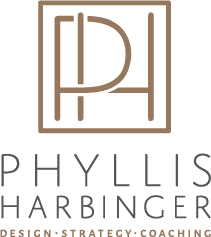Profit First
“Profit First” by Mike Michalowicz, is a revolutionary book that challenges the traditional approach to business finances. This innovative philosophy flips the narrative on the conventional formula of ‘sales minus expenses equals profit,’ and advocates for ‘sales minus profit equals expenses.’ By making profit your priority and allocating funds accordingly, Michalowicz provides entrepreneurs with a practical blueprint for financial success.
Have you thought about introducing a system of multiple bank accounts, each serving a distinct purpose, ensuring that profit is safeguarded from being absorbed by day-to-day expenses? This groundbreaking concept has fueled many business owners to reevaluate their financial strategies, cultivate fiscal responsibility and discipline, and build their firms with a solid foundation for lasting prosperity. Let’s explore some of the key strategies to implement this principle effectively in your business.
Establishing Profit-Driven Targets:
Setting specific, measurable, attainable, relevant, and time-bound (SMART) profit targets is crucial. Define your desired profit margins and break them down into achievable milestones. Check regularly to be sure that your progress towards these goals aids in course correction and keeps your financial objectives on track.
Implementation:
Michael encourages businesses to open multiple bank accounts, each serving a distinct purpose. These accounts include the Profit Account, Owner's Pay Account, Tax Account, and Operating Expenses Account. By allocating a set percentage of income to each account, businesses ensure that profit is protected from being absorbed by your daily expenses.
Reducing Costs and Maximizing Efficiency:
Review your expenses periodically to identify areas where cost-cutting is possible without compromising quality. Perhaps you can look at Meals & Entertainment, Subscriptions that are on auto-pilot and creep up in price yearly. You may begin or continue to embrace efficiency-enhancing technologies, negotiate with your vendors for better pricing, and optimize your systems and processes to reduce overhead. Every saved dollar contributes to a healthier profit margin.
Prioritizing Revenue-Generating Activities (RGA’s):
You always want to aim to align with your core business objectives. What is your product and/or service offerings? Which elements will be high-margin offerings? Once you determine this, invest resources in their promotion and development. As creatives, we know the importance of nurturing client relationships and delivering exceptional value and quality. This is what will lead to repeat business and more word-of-mouth referrals.
Diversifying Income Streams:
When we rely on only one revenue stream, we expose our business to greater risks. Explore opportunities that complement your core offerings and speak to your target audience. By expanding into new markets or introducing complementary products/services, you can enhance your overall profitability.
Investing in Professional Financial Management:
Seek the expertise of financial advisors or accountants to ensure sound financial planning and tax management. Their insights can help optimize your financial strategy and enable you to take advantage of potential tax benefits or credits.
After you’ve paid your own salary, a good point of reference for your net profit margin would be approximately twenty-five to thirty percent. This will offer you peace of mind and the assurance that each project you work on brings in enough profit to reinvest into the key areas to continue to see your business grow.
Placing profit first in your business is not about sacrificing growth or innovation; rather, it guides you to create a framework which will drive success and stability for the long term. You will build a resilient business that can weather even the most challenging economic landscapes. Remember, being consistent and committed to the principles outlined above will not only strengthen your bottom line, but also position you and your firm as a force in the design community.

